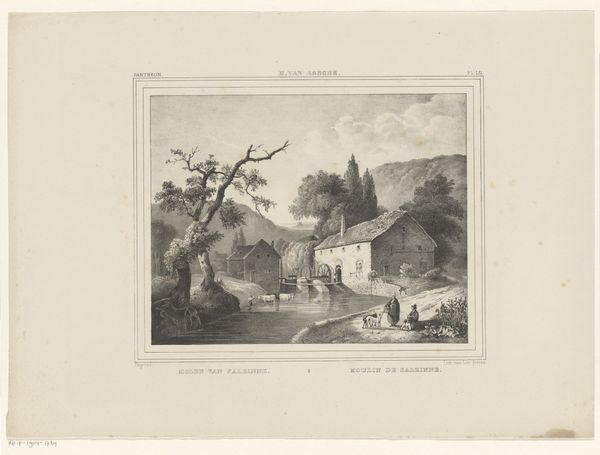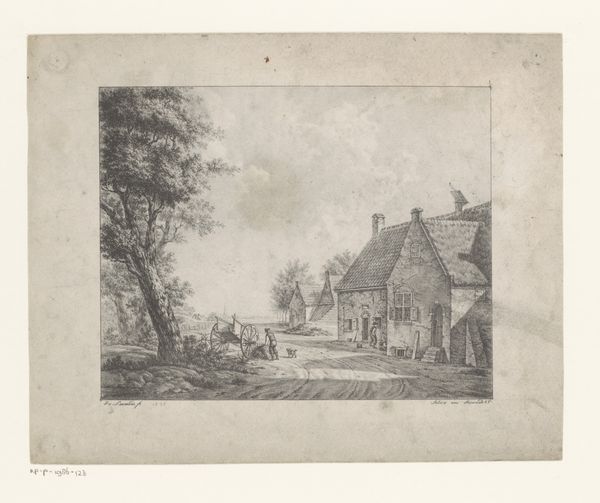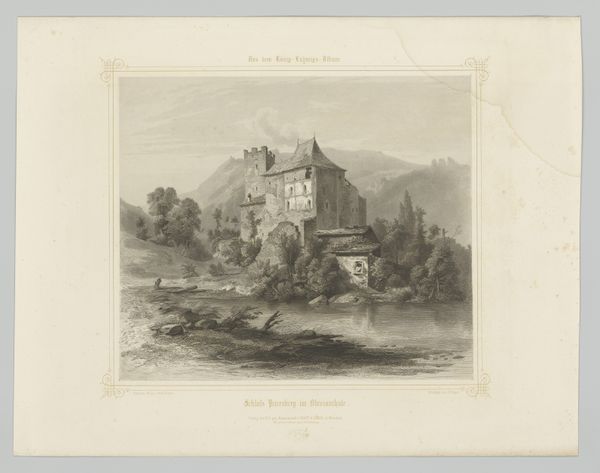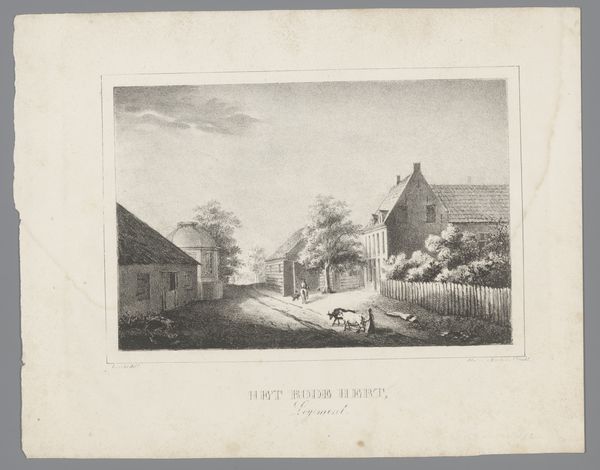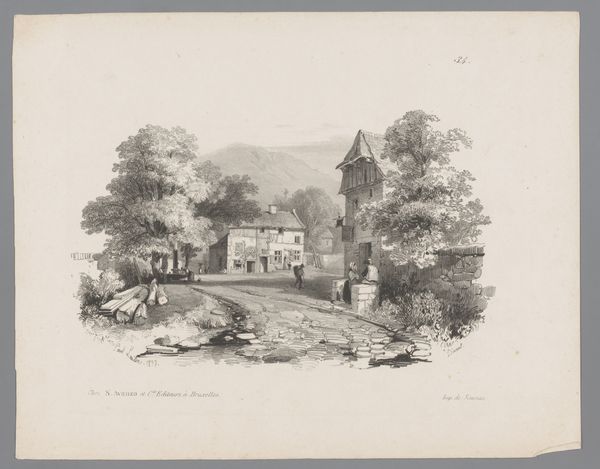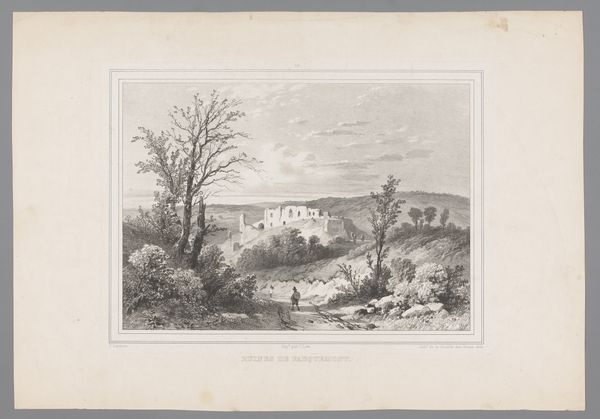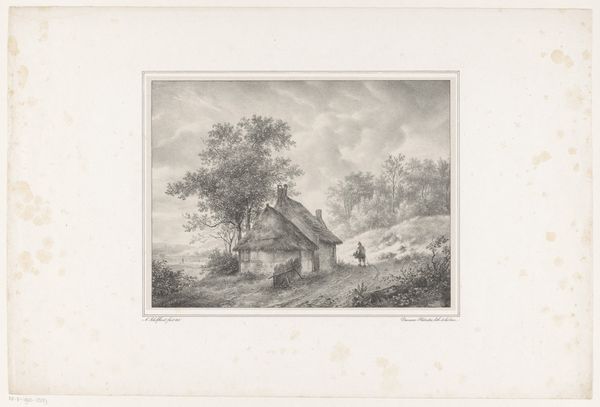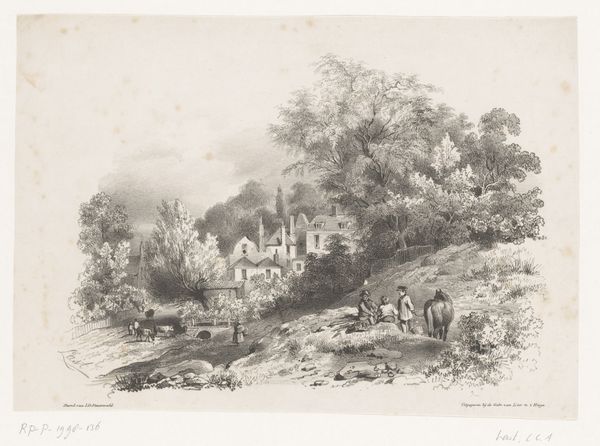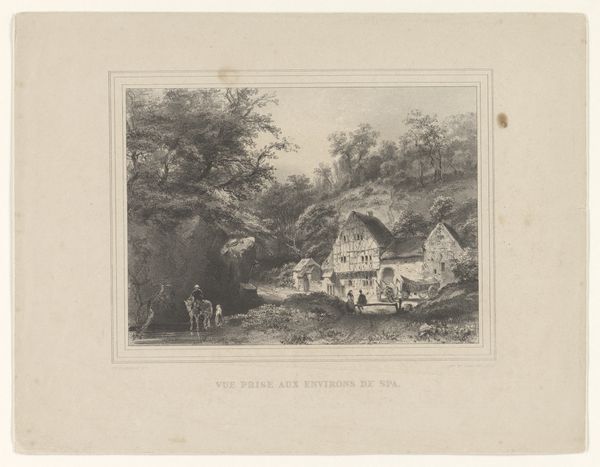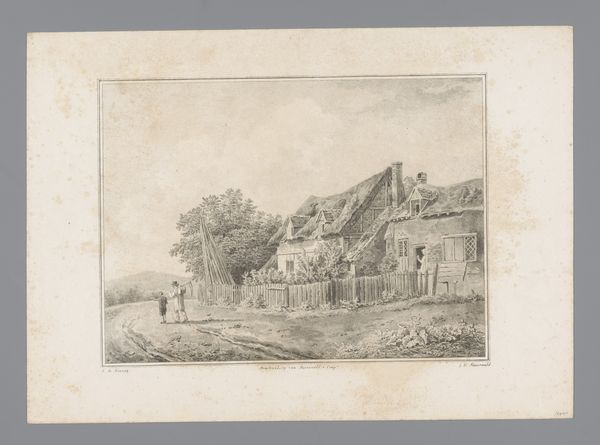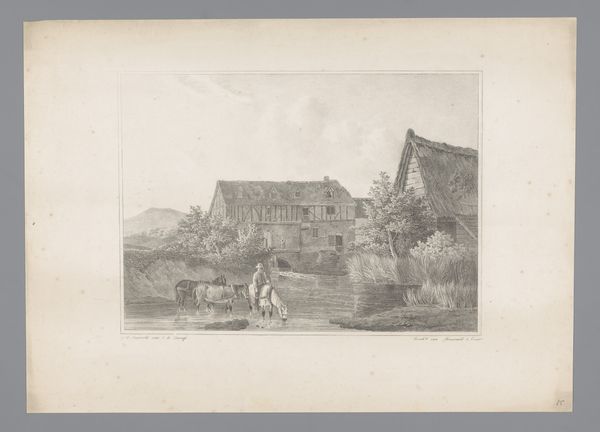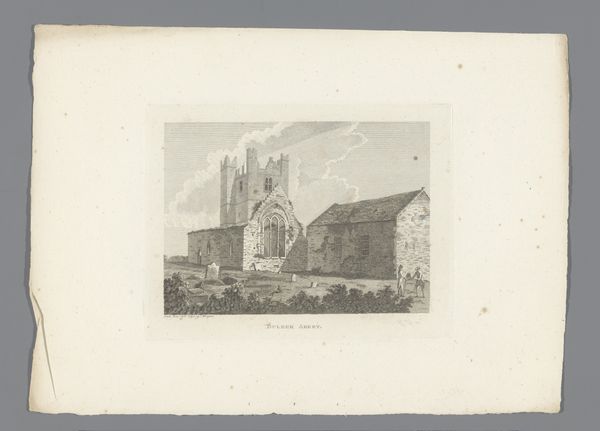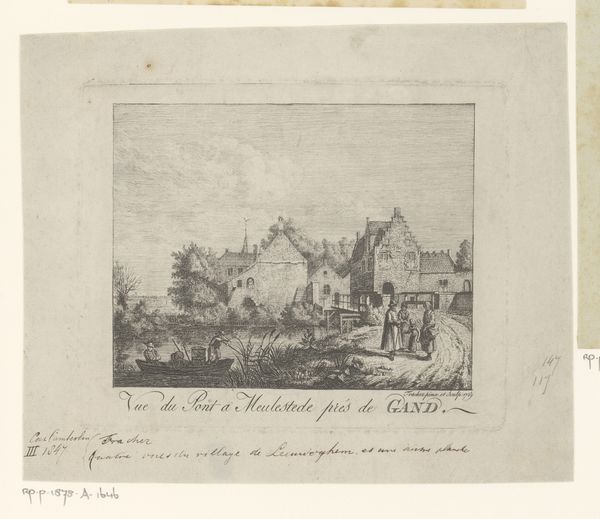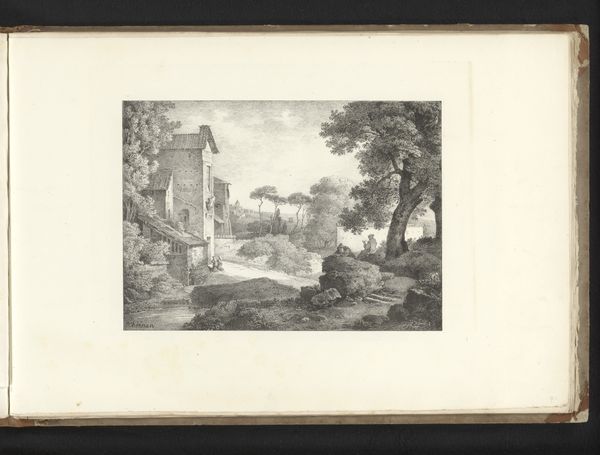
print, engraving
# print
#
landscape
#
romanticism
#
genre-painting
#
engraving
Dimensions: height 228 mm, width 283 mm
Copyright: Rijks Museum: Open Domain
Curator: Welcome. We're looking at "Gezicht op de molen van Salzinnes", or "View of the Mill of Salzinnes." It's an engraving by Paulus Lauters. Editor: Immediately striking. It feels… nostalgic, even a bit melancholic. The soft light and detailed linework really capture a peaceful scene. Is it Belgian, given the name "Salzinnes"? Curator: Yes, Lauters was Belgian, and the work reflects the Romanticism style prevalent during much of the 19th century, though dating can be a little tricky since it spans 1816 to 1875. Note how he utilizes linear perspective to draw us into the landscape, guiding our eye towards the mill, the central visual point. Editor: And the people add to that impression. They seem ordinary, folks minding their own business. I am struck by how this piece might romanticize rural life, perhaps ignoring some of the harsher realities faced by rural populations during that time. How did industrialization impact this image? Was it offering an escape? Curator: That's precisely the tension! The print almost certainly is responding to it. Lauters emphasizes detail of natural forms, look at the carefully delineated branches, and also the stonework in the mill structure. See also how he suggests the water’s reflections by using careful and concise marks with the engraving. It reveals how an etcher’s understanding of the effects of light plays a role in conveying textures in visual form. Editor: Absolutely. By creating such a serene image, Lauters seems to offer a refuge, perhaps a critique of burgeoning industrial society. Who, after all, does rural labor actually serve? The image makes me question how often our narratives omit such a complex part of our social history. It is a quiet scene. Curator: Yes. Formally, the symmetry is understated, anchored by the mill itself. He seems to want a grounded image that draws on harmony. But if you note Lauters’ expert manipulation of shadow, one finds subtle indications of the labor underlying such picturesque beauty, as you noted. Editor: Well, this engraving by Lauters has made me think deeply about pastoral ideals and the historical contexts shaping not only their depiction, but how our lives are shaped in the present. Thank you for helping bring that forward! Curator: An incisive comment, precisely the point. Thank you.
Comments
No comments
Be the first to comment and join the conversation on the ultimate creative platform.
